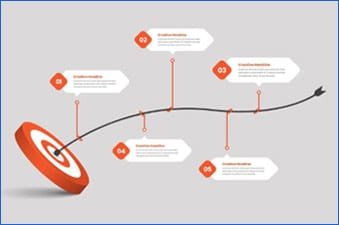Realigning Leadership. Redesigning for Results.
“Every system is perfectly designed to get the results it gets.”
– W. Edwards Deming

“Every system is perfectly designed to get the results it gets.”
– W. Edwards Deming
Is your organisation facing internal friction, unclear decision-making, or frequent overlaps in responsibilities? Are functional heads working in silos, or are performance goals being missed despite capable leadership?
These are clear indicators of structural misalignment, where roles, responsibilities, and reporting lines no longer support your business strategy. Without a coherent structure, decision making becomes inconsistent, accountability is diluted, and communication breaks down.
At Cornerstone, we help you redesign your organisation’s structure to eliminate ambiguity, enhance accountability, and unlock performance. No Performance Management System (PMS), no matter how well designed, can succeed if the structure behind it is flawed.

Companies must continually adapt to remain competitive in today’s fast-paced business environment. Research shows that 58% of organizations report misalignment between their structure and strategy as a key barrier to growth (Gartner, 2023). Whether due to business growth, market shifts, leadership transitions, or operational inefficiencies, your structure must evolve with your business goals.
Organisational structure refers to how roles, reporting relationships, and teams are designed to support business execution. The right structure ensures:
We follow a practical, diagnostic-led approach to redesign, grounded in your reality—not theory.

We begin by aligning with your long-term objectives and business goals to ensure the redesign supports your future direction.

We analyze your existing organizational setup—reporting lines, span of control, decision-making authority—to uncover what’s working and what’s not.

Through structured conversations with key stakeholders, we surface pain points, inefficiencies, and misalignments that are hindering performance.

Using these insights, we develop a future-ready structure that aligns roles, resources, and accountability with your strategic goals.

We ensure the new design integrates seamlessly with your Performance Management System (PMS), so structure and performance work in tandem.

We help leadership effectively communicate the redesign, fostering buy-in, reducing resistance, and ensuring a smooth transition.

Challenge (Before):
● Functional heads had overlapping KPIs
● Operations and sales teams clashed over delivery ownership
● Strategic decisions were delayed due to unclear escalation paths
● PMS implementation failed due to role ambiguity

Our Intervention:
● Mapped current structure and workflows
● Identified decision bottlenecks and duplication
● Redesigned org chart with clear role boundaries and reporting lines
● Linked structure with revised KPIs and PMS metrics

Challenge (Before):
● Functional heads had overlapping KPIs
● Operations and sales teams clashed over delivery ownership
● Strategic decisions were delayed due to unclear escalation paths
● PMS implementation failed due to role ambiguity

Our Intervention:
● Mapped current structure and workflows
● Identified decision bottlenecks and duplication
● Redesigned org chart with clear role boundaries and reporting lines
● Linked structure with revised KPIs and PMS metrics

Results (After):
● 30% faster decision-making at operational level
● 2x improvement in cross-functional collaboration
● Export sales increased by 40% within 12 months
● PMS adoption improved significantly

Results (After):
● 30% faster decision-making at operational level
● 2x improvement in cross-functional collaboration
● Export sales increased by 40% within 12 months
● PMS adoption improved significantly
It’s the process of redesigning your company's structure—roles, reporting lines, and workflows—to better align with your strategy.
During growth, M&A, leadership change, declining performance, or when facing internal friction or unclear accountability.
Restructuring is about aligning people and roles with strategy. It may involve role changes but isn’t focused on reducing headcount.
Yes. A clear structure is essential for PMS to work effectively—linking goals, roles, and accountability.
CXOs, business heads, and functional leaders are engaged to ensure the design reflects business realities and priorities.